PERHEXILINE MALEATE SALT
Synonym(s):2-(2,2-Dicyclohexylethyl)piperidine
- CAS NO.:6724-53-4
- Empirical Formula: C23H39NO4
- Molecular Weight: 393.56
- MDL number: MFCD00057329
- EINECS: 229-775-5
- SAFETY DATA SHEET (SDS)
- Update Date: 2024-11-19 23:02:33
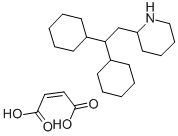
What is PERHEXILINE MALEATE SALT?
Description
Perhexiline is a carnitine palmitoyltransferase 1 (CPT1) and CPT2 inhibitor that was originally developed as an anti-anginal drug in the 1970s. It inhibits rat heart and liver CPT1 (IC50 = 77 and 148 μM, respectively) and rat heart CPT2 (IC50 = 79 μM). Inhibition of CPT reduces uptake of long-chain fatty acids into the mitochondria, thereby shifting cellular metabolism from β-oxidation to glycolysis. Perhexilin inhibits mTORC1 signaling at 10 μM and induces autophagy ~7-fold at a concentration of 10 μM in MCF-7 cells.
Chemical properties
White Solid
Originator
Pexid, Merrell-Tourade ,France ,1973
The Uses of PERHEXILINE MALEATE SALT
PERHEXILINE MALEATE SALT is a Vasodilator, used in treatments for angina.
The Uses of PERHEXILINE MALEATE SALT
H1 antihistamine
The Uses of PERHEXILINE MALEATE SALT
Perhexiline maleate salt has been used to block fatty acid oxidation. It has also been used as 5′?adenosine?monophosphate-activated?protein kinase?(AMPK)?activator and in worm lifespan assay.
What are the applications of Application
rac Perhexiline Maleate is a CPT-1, CPT-2, and mTORC1 inhibitor
Manufacturing Process
1,1-Dicyclohexyl-2-(2'-pyridyl)ethanol hydrochloride (5 grams) was dehydrated by heating with 25 ml of concentrated hydrochloric acid at steam bath temperature for 10 minutes. 70 ml of water were added to the reaction mixture to give the crystalline hydrochloride salt. The product, 1,1dicyclohexyl-2-(2'-pyridyl)ethylene hydrochloride, was recrystallized from methanol-ethyl acetate to yield a white solid melting at 150°-151.5°C.
1,1-Dicyclohexyl-2-(2'-pyridyl)ethylene hydrochloride (15 grams) in 150 ml of ethanol was hydrogenated in the presence of platinum oxide at about 60 pounds per square inch of hydrogen pressure. The product, 1,1-dicyclohexyl2-(2'-piperidyl)ethane hydrochloride, crystallized from a mixture of methanol and methyl ethyl ketone as a white solid melting at 243° to 245.5°C.
The hydrochloride salt was neutralized with 10% sodium hydroxide solution and the free base so produced was dissolved in ether. The ether solution was dried over anhydrous magnesium sulfate. Addition of an excess of maleic acid in methanol to the solution yielded the acid maleate salt which melted at 188.5°-191°C.
The starting material was obtained by reacting ethyl formate with cyclohexylmagnesium bromide to give dicyclohexylcarbinol. That is oxidized to dicyclohexylketone and then reacted with α-picoline.
brand name
Pexid (Marion Merrell Dow).
Therapeutic Function
Coronary vasodilator
General Description
Perhexiline maleate regulates?coronary vasodilatation and blocks exercise-induced tachycardia. It is used to treat angina pectoris and variant angina. Perhexiline maleate functions as a cardiac metabolic agent. It is associated with peripheral neuropathy, high intracranial pressure with?papilledema?and proximal myopathy.
Biochem/physiol Actions
Perhexiline maleate is an anti-anginal metabolic modulator. It inhibits the mitochondrial enzyme carnitine palmitoyltransferase CPT-1 and to a lesser extent CPT-2. This causes a shift in myocardial substrate utilisation from long chain fatty acids to carbohydrates, resulting in increased glucose and lactate utilization and increased ATP production for the same O2 consumption as before and consequently increases myocardial efficiency. Perhexiline maleate was also recently found to inhibit the activity of mTORC1.
Safety Profile
Poison by intraperitoneal route. Moderately toxic by ingestion.Human systemic effects by ingestion: muscle weakness, paresthesia, and hepatitis. Mutation data reported. Whenheated to decomposition it emits toxic fumes of NOx.
in vitro
perhexiline maleate concentration-dependently and competitively inhibited cpt1 in rat cardiac and hepatic mitochondria, with an ic50 value of 77 and 148 μm, respectively. it was indicated that perhexiline maleate displayed a greater sensitivity of the cardiac than the hepatic enzyme when exhibiting inhibition effect [1]. perhexiline maleate produced concentration-dependent inhibition of cpt2 activity with an ic50 value of 79 μm [2]. in human breast cancer mcf-7 cells, perhexiline maleate blocked mtorc1 signaling at 10 μm and elicited autophagy ~7-fold at a concentration of 10 μm [3].
in vivo
adult mice of swiss nmri strain were orally administrated with perhexiline maleate at a dosage of 100 mg/kg body weight/day for 10 weeks. perhexiline maleate triggered changes in nerve, including a few cytoplasmic inclusions in schwann and perineurial cells of mice treated with perhexiline maleate. after 11 weeks of administration of the drug, and up to 18 weeks, small abnormal zones were displayed on several muscle fibers, which were formed by tubular aggregates [4].
storage
Store at +4°C
References
[1]. kennedy, j., unger, s., & horowitz, j. inhibition of carnitine palmitoyltransferase-1 in rat heart and liver by perhexiline and amiodarone. biochemical pharmacology. 1996; 52(2): 273-280.
[2]. kennedy, j., kiosoglous, a., murphy, g., pelle, m., & horowitz, j. effect of perhexiline and oxfenicine on myocardial function and metabolism during low-flow ischemia/reperfusion in the isolated rat heart. journal of cardiovascular pharmacology. 2000; 36(6): 794-801.
[3]. balgi, a., fonseca, b., donohue, e., tsang, t., lajoie, p., & proud, c. et al. screen for chemical modulators of autophagy reveals novel therapeutic inhibitors of mtorc1 signaling. plos one. 2009; 4(9): e7124.
[4]. fardeau, m., tomé, f., & simon, p. muscle and nerve changes induced by perhexiline maleate in man and mice. muscle & nerve. 1979; 2(1): 24-36.
Properties of PERHEXILINE MALEATE SALT
| Melting point: | 181-183°C |
| storage temp. | 2-8°C |
| solubility | DMSO: ≥5mg/mL |
| form | powder |
| color | white to tan |
Safety information for PERHEXILINE MALEATE SALT
Computed Descriptors for PERHEXILINE MALEATE SALT
New Products
4-AMINO-TETRAHYDRO-PYRAN-4-CARBOXYLIC ACID HCL 4-(Dimethylamino)tetrahydro-2H-pyran-4-carbonitrile 4-AMINO-TETRAHYDRO-PYRAN-4-CARBOXYLIC ACID 4-Aminotetrahydropyran-4-carbonitrile Hydrochloride (R)-3-Aminobutanenitrile Hydrochloride 5-Bromo-2-nitropyridine Nimesulide BP Aceclofenac IP/BP/EP Diclofenac Sodium IP/BP/EP/USP Mefenamic Acid IP/BP/EP/USP Ornidazole IP Diclofenac Potassium 3-Bromopyrazole (3aR,4R,5R,6aS)-hexahydro-5-Triethyl silyloxy-4-((E)-3-oxo-5-phenylpent-1- enyl)cyclopenta[b]furan-2-one. 1-Chlorocarbonyl-4-piperidinopiperidine 1-Bromo-4-phenyl-2-Butanone 4-Amino-2-fluoro-N-methylbenzamide 1,1'-Carbonyldiimidazole SODIUM AAS SOLUTION ZINC AAS SOLUTION BUFFER SOLUTION PH 10.0(BORATE) GOOCH CRUCIBLE SINTERED AQUANIL 5 BERYLLIUM AAS SOLUTIONRelated products of tetrahydrofuran


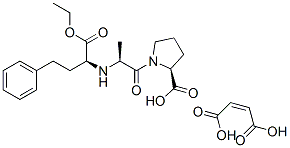
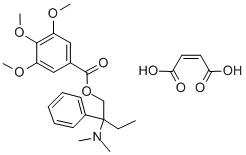
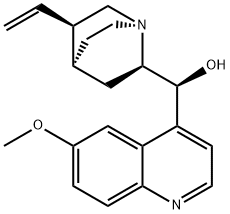
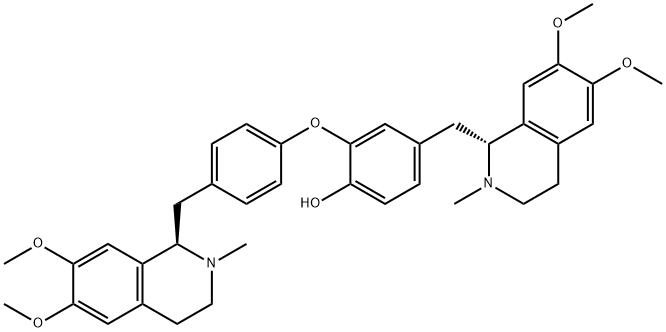
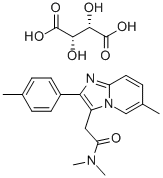

You may like
-
 Perhexiline maleate salt CAS 6724-53-4View Details
Perhexiline maleate salt CAS 6724-53-4View Details
6724-53-4 -
![Dimethyl [2-oxo-3-[3-(trifluoromethyl)phenoxy]propyl]phosphonate 99%](https://img.chemicalbook.in//Content/image/CP5.jpg) Dimethyl [2-oxo-3-[3-(trifluoromethyl)phenoxy]propyl]phosphonate 99%View Details
Dimethyl [2-oxo-3-[3-(trifluoromethyl)phenoxy]propyl]phosphonate 99%View Details
54094-19-8 -
 85-81-4 99%View Details
85-81-4 99%View Details
85-81-4 -
![208111-98-2 (3aR,4R,5R,6aS)-5-(Benzoyloxy)hexahydro-4-[(1E)-3-oxo-4-[3-(trifluoromethyl)phenoxy]-1-buten- 1-yl]-2H-cyclopenta[b]furan-2-one 99%](https://img.chemicalbook.in//Content/image/CP5.jpg) 208111-98-2 (3aR,4R,5R,6aS)-5-(Benzoyloxy)hexahydro-4-[(1E)-3-oxo-4-[3-(trifluoromethyl)phenoxy]-1-buten- 1-yl]-2H-cyclopenta[b]furan-2-one 99%View Details
208111-98-2 (3aR,4R,5R,6aS)-5-(Benzoyloxy)hexahydro-4-[(1E)-3-oxo-4-[3-(trifluoromethyl)phenoxy]-1-buten- 1-yl]-2H-cyclopenta[b]furan-2-one 99%View Details
208111-98-2 -
 2033-24-1 99%View Details
2033-24-1 99%View Details
2033-24-1 -
 Meldrums acid 2033-24-1 99%View Details
Meldrums acid 2033-24-1 99%View Details
2033-24-1 -
 Cyaclopentane carboxylic acid 99%View Details
Cyaclopentane carboxylic acid 99%View Details
3400-45-1 -
 2-Aminopyridine 504-29-0 99%View Details
2-Aminopyridine 504-29-0 99%View Details
504-29-0